The politics of disaster response
Providing support to civil services in a disaster is one of the main duties of the modern Swiss army. With cutbacks proposed by the cabinet and a popular vote to end conscription around the corner, the army is increasingly on the defensive.
In the hot noonday sun the Epeisses rescue training centre near Geneva is like a ghost town. Everywhere there are hulking piles of rubble and concrete. Buildings rest at impossible angles, their floors compressed so that they resemble the layers of a sandwich. They wait to swallow the latest group of soldiers who have come to Geneva to practice earthquake rescue techniques.
The army’s several thousand rescue and engineering troops operate primarily within Swiss borders. They are called into service only after local and cantonal civil organisations (police, fire, ambulance) are overwhelmed and officially request help from the defence and civil protection ministry.
This doesn’t happen often. According to Colonel Stefan Christen, commander of the Non-commissioned Officers’ and Recruits’ Rescue School, it “depends on the year”.
“In 2005 we had huge floods. We had forest fires in the same year. And then another year we had nothing at all. If we take the average, we have one to three operations per year.”
The army confirms that it devoted only 54 days of active duty to disaster relief in 2012, a year without any major natural catastrophes.
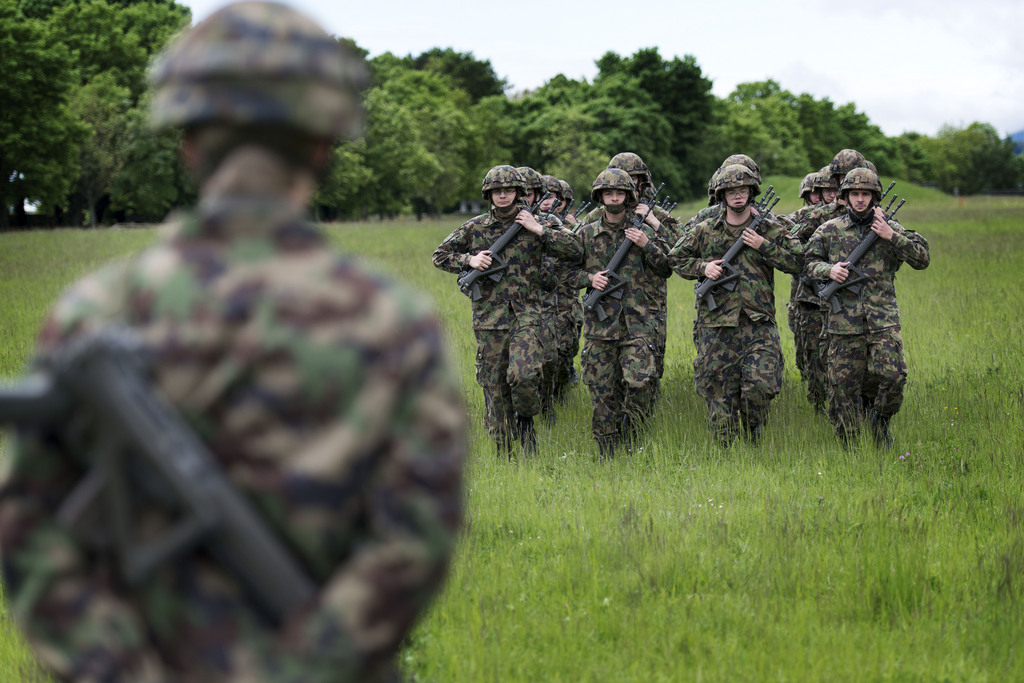
More
Visiting the troops
A job for civilians?
In the eyes of Nikolai Prawdzic, spokesman for the Group for a Switzerland without an Army, which instigated a vote this September against conscription, the very small fraction of its time the army devotes to disaster relief hardly justifies its existence.
“Basically, we are of the opinion that this is a civilian task and should also have a civilian face,” he says.
In fact, in 2007 the European Commission surveyed civil protection authorities of the 32 countries which belonged at the time to the Community Civil Protection Mechanism, a coalition of countries working together to prevent, prepare for and respond to major disasters.
The countries were asked about the civilian or military nature of civil protection in their respective countries. The results showed that civil protection was overseen by the interior ministry in the majority of countries (18), and by the defence ministry in only three.
Some of the army’s activities in the past 10 years:
- 2004, Collapse of underground parking garage, Gretzenbach, canton Solothurn
- 2005, Flooding, Bern, canton Bern
- 2007, Forest fire, Canton Valais
- 2009, Earthquake, Padang, Indonesia
- 2013 (April), Landslides, Domat/Ems, canton Graubunden
- 2013 (June), Windstorms, Biel, canton Bern
Source: Army Engineering and Rescue Training Unit 75
Well-equipped
In Switzerland, initial response to a disaster is handled by local and cantonal authorities, which are overseen by the Federal Office for Civil Protection. In 2004, the federal government created a special Rapid Response Army task force which can respond to catastrophes within hours. And each year, out of some 20,000 new army recruits, around 1,200 are chosen to do their military service in the companies devoted to disaster response.
The army’s rescue troops have an impressive array of equipment at their disposal. There are saws, generators, floodlights, compressors that can lift up to 40,000 kilograms in seconds, CO2 lasers that can cut through steel railway ties in a matter of minutes, hoses with 150mm diameters, pumps that can draw up to 4,250 litres of fluid per minute, drums that can grind 700 mm-diameter holes in concrete, and cameras that can be lowered into crevices to relay video images of trapped victims. Not to mention tanks, helicopters, boats, ambulances, tents, and mobile operating rooms.
Three times a year, much of this equipment fills the lawn of the military barracks in the Swiss capital, the site of the army’s only centralised Unit Leadership School. There, recruits who are training to become officers are shown “what good equipment we have for disaster relief and in the branch of medics”, says Colonel Philipp Imboden.
Interested members of the public are often invited to tour the site.
“As a taxpayer I want to know what the army does with the money. So the army shows them what we’ve got. And they can see how well we use their money,” Imboden says.
In April 2013 the Federal Office for Civil Protection presented a comprehensive report analysing the risks that 12 different types of hazards pose for the Swiss population. With input from 65 experts representing federal, cantonal and local authorities, science, and business, a diagram was created that shows the likelihood (on a scale from plausible to inconceivable) of such events occurring in Switzerland over a period of anywhere from one to 100,000 years, and the amount of damage they would be expected to cause.
The diagram shows that an epidemic/pandemic poses the greatest risk, followed by an earthquake. A major earthquake can be expected to occur once every 1,000 years in Switzerland, with the last one hitting the Basel area in 1356.
Potential effects
How the army uses taxpayers’ money may be changing. In May Defence Minister Ueli Maurer presented a plan to scale back the army and a month later the Swiss cabinet released a proposal for its reorganisation. This includes reducing the number of soldiers from 180,000 to 100,000; reducing the number of courses for new recruits from three to two per year; reducing the duration of repetition courses from three weeks to 13 days; reducing each soldier’s lifetime service requirement from 260 days to 225 days; and closing some military airports and shooting ranges.
So, how would disaster relief services be affected if the army reduces the number of soldiers from 180,000 to 100,000, as proposed?
“It’s not that easy to say,” according to Kurt Münger, a spokesperson for the Federal Office for Civil Protection. “If the Swiss Army is reduced in terms of personnel, it seems clear that the support of the army for civil authorities must decrease.… It’s up to the cantons to analyse now whether they may have a problem.”
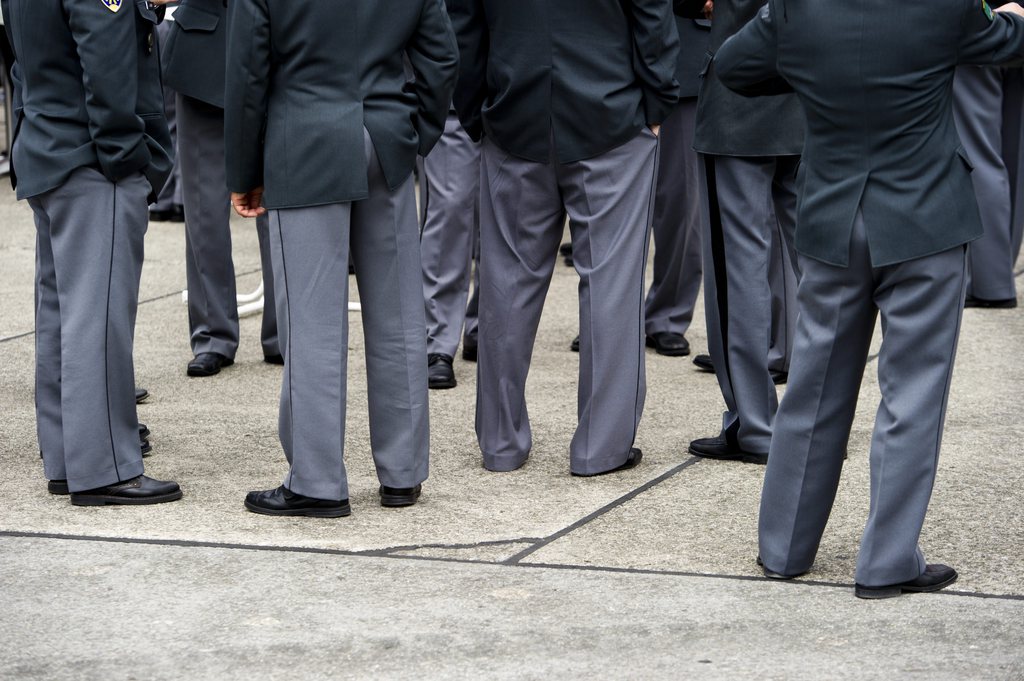
More
Battle for Swiss army set for third ballot
Sandbags, not rifles
In the meantime, the army has another hurdle to overcome. In September Swiss citizens will vote on a people’s initiative launched by the Group for a Switzerland without an Army which would do away with the law requiring all Swiss men to perform military service (see related story). What would passage of the initiative mean in terms of the country’s ability to respond to disasters?
“The consequences are not defined by the initiative,” says Münger. They would differ based on the options, which might include having no army at all, a voluntary militia, or a professional army.
The first option is the best in the eyes of Nikolai Prawdzic.
“Basically, you don’t need an assault rifle to carry sandbags,” he said.
In the view of Colonels Christen and Imboden, the current system is the best one. For one thing, a professional army would be too expensive.
“We don’t always have disasters,” says Christen. “We can’t plan disasters. So what will the [professional soldiers] do when there’s no disaster at all?”
“If the population says no to the conscript Army we have today, then the politicians have to decide how we will go on,” says Christen. “It’s then a political problem.”

In compliance with the JTI standards
More: SWI swissinfo.ch certified by the Journalism Trust Initiative

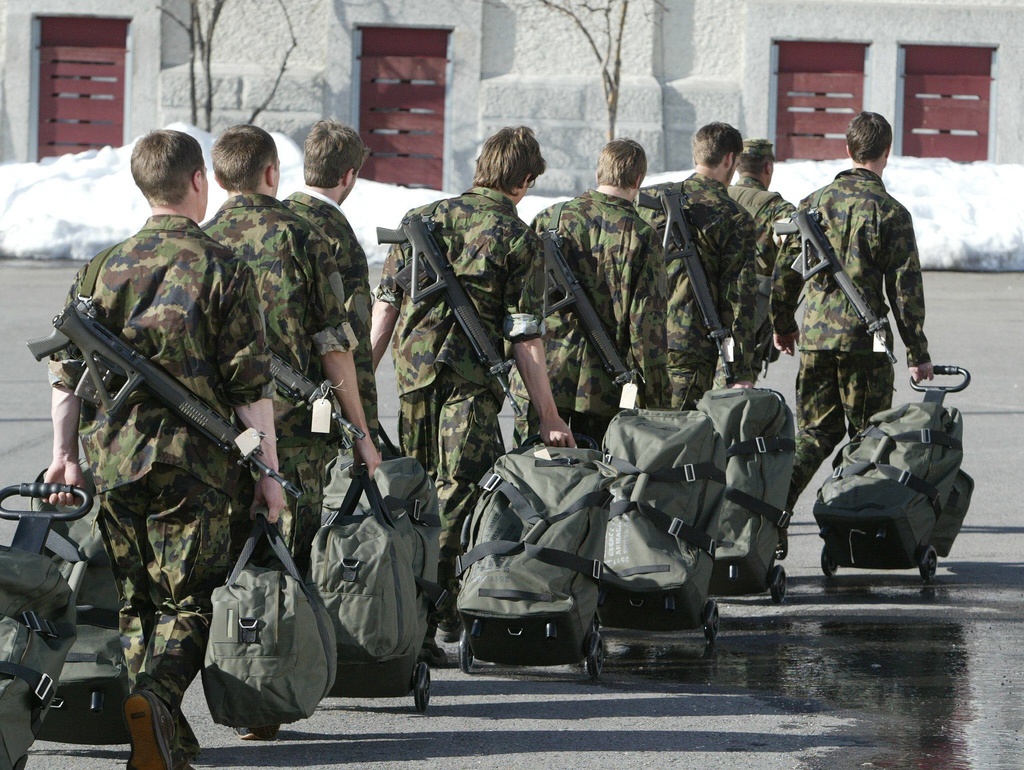
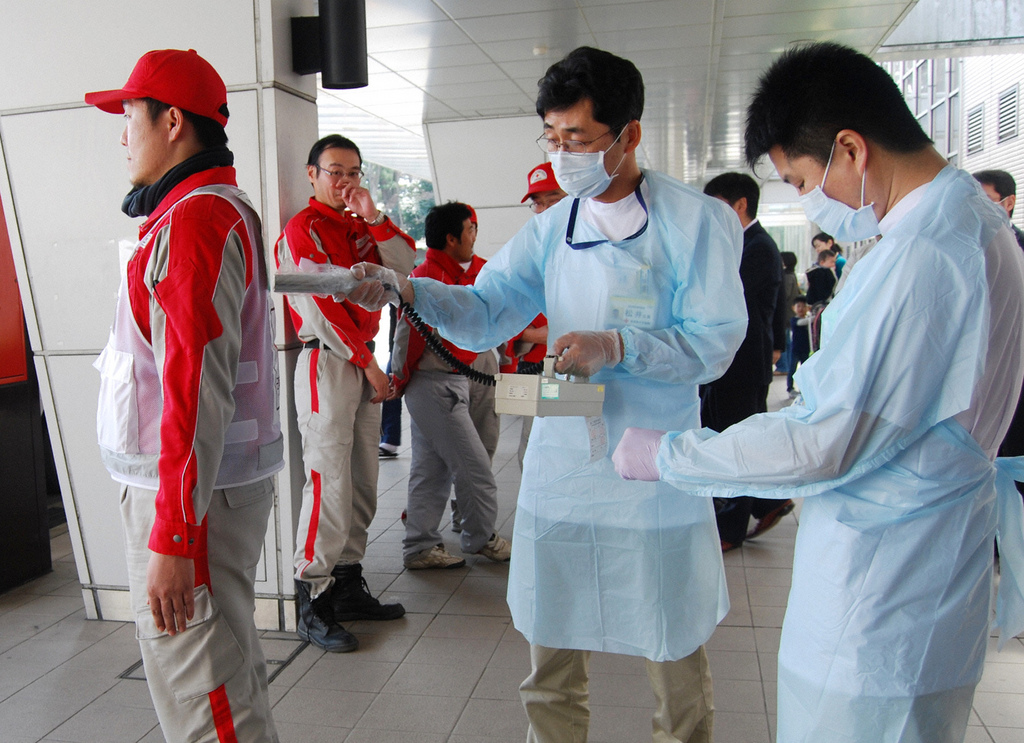

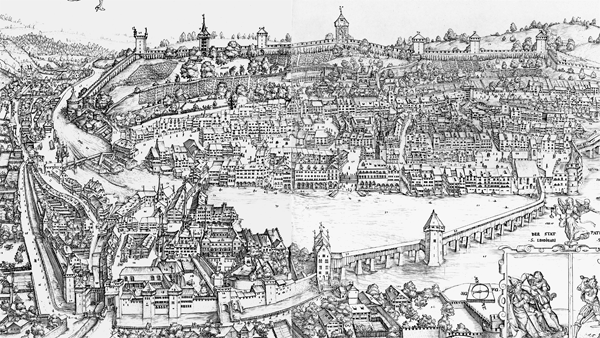
You can find an overview of ongoing debates with our journalists here. Please join us!
If you want to start a conversation about a topic raised in this article or want to report factual errors, email us at english@swissinfo.ch.